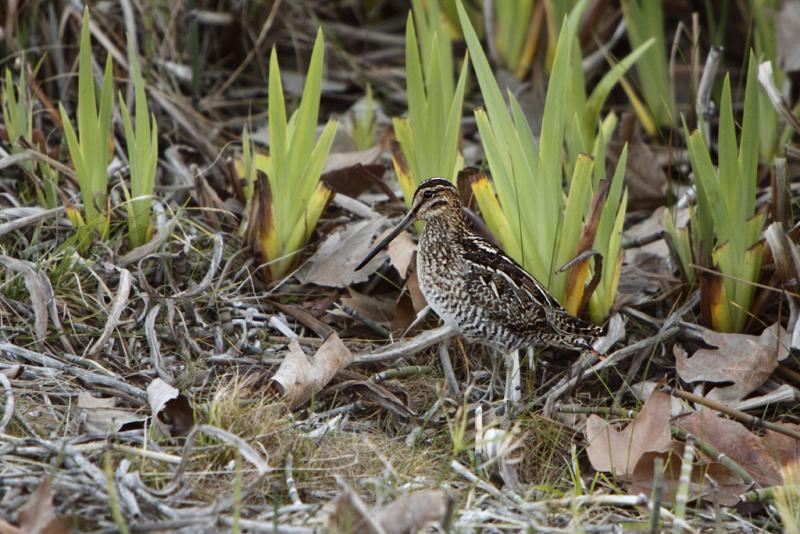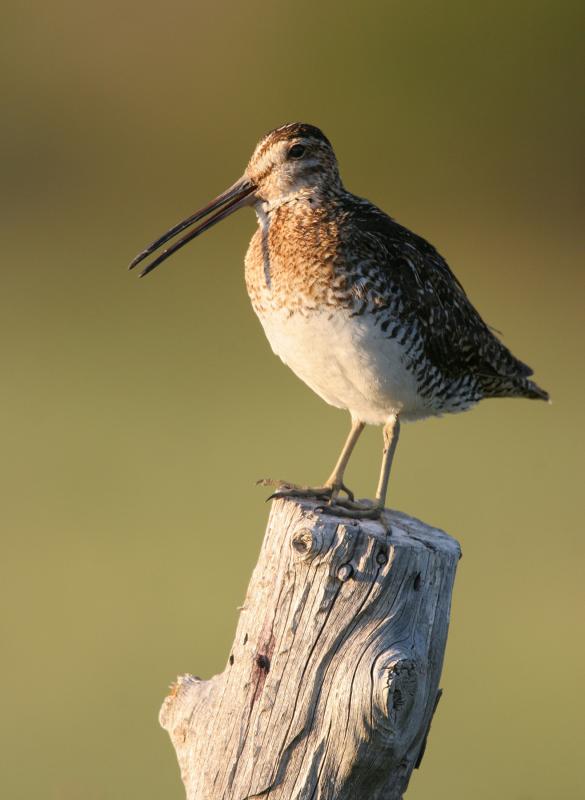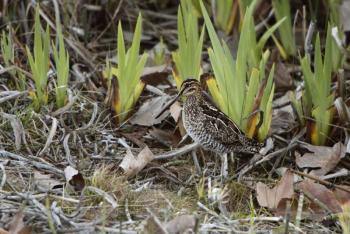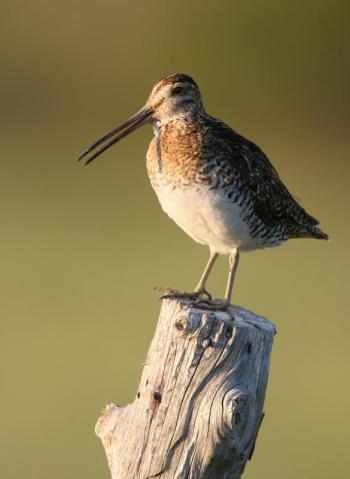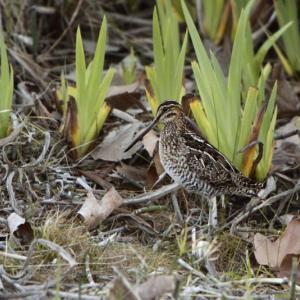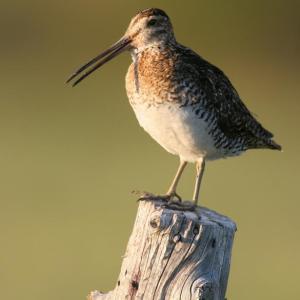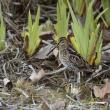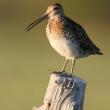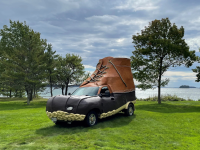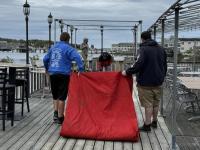‘Snipe Hunt’ in Farm Country
We didn’t know we were on a snipe hunt. Nothing in our plans suggested we were on a wild goose chase or any other made-up adventure designed to make us look foolish.
And yet last week, high up over our heads in the farm country of northern Richmond there it was, a bird with a softball-sized body, rapidly beating wings and, most telling, an almost absurdly long bill—a Wilson’s snipe.
Some folks enjoy playing practical jokes on others, including sending someone off looking for an imaginary creature — such a ruse has probably been around for millenia. But the description of it as a “snipe hunt” is said in some online sources to have been around since at least the early 1800s. We couldn’t readily find a really good explanation of how the joke came to be named after a real bird, the snipe.
But we have our own theories.
Snipe are rather cryptic birds in the shorebird family. They look a bit like a smaller, slimmer version of a woodcock in general shape. They feed in freshwater wetlands like marshes, bogs, and wet fields, and along the muddy edges of ponds, lakes, and rivers. Various species of snipe occur around the world including several in Europe; one, the Wilson’s snipe, is found in North America. Wilson’s snipe breed across most of Canada and the northern third of the U.S. Here in Maine, they are widespread but spotty breeders, being more widespread in northern and eastern Maine.
Snipe have been a popular bird to hunt in the last two centuries in both Europe and North America. We expect that hunting them would require slogging around in wet and muddy places, which some people would find unpleasant. Snipe love to stay hidden in the vegetation until you almost step on them, at which point they will typically leap up and fly quickly away, giving a rough “skaap” call that can make you jump when you don’t expect it. Trying to get a shot at one when they do this would seemingly be quite difficult (although people probably use dogs to locate them, as they do with woodcock).
It's not hard to imagine many an inexperienced or unskilled hunter coming back wet, muddy, and empty-handed after a morning of hunting for snipe. To such an unlucky person, the snipe might easily seem to be a mythical creature.
For many years, we had the misfortune to never be able to track down and see for our own eyes a spruce grouse. We hiked trail after trail in areas said to be the best places for them, without even a glimpse. Sometimes we wondered if the spruce grouse was also an elaborate prank.
We’ve told visitors to the state about the six-foot dinosaur fish called sturgeon that inhabit the Kennebec River. They are sure we are making it up. That is, until they see one leap straight out of the water and come splashing down in front of them on a summer day.
Over the weekend, we were delighted to see a real Wilson’s snipe over the wet farm fields of Richmond. In multiple visits there during May and June, we never heard the characteristic pulsating “woo-woo-woo” sounds that males make with their special tail feathers in courtship display flight, so we don’t think that they nested there. More likely is that this was an early migrant or wanderer from a failed nesting attempt somewhere else. But who knows?
On our next visit to the Richmond farm fields, we will unabashedly be on a real, honest-to-goodness snipe hunt. That is, we’ll be birding for them. Wish us luck!
Jeffrey V. Wells, Ph.D., is a Fellow of the Cornell Lab of Ornithology and Vice President of Boreal Conservation for National Audubon. Dr. Wells is one of the nation's leading bird experts and conservation biologists and author of the “Birder’s Conservation Handbook.” His grandfather, the late John Chase, was a columnist for the Boothbay Register for many years. Allison Childs Wells, formerly of the Cornell Lab of Ornithology, is a senior director at the Natural Resources Council of Maine, a nonprofit membership organization working statewide to protect the nature of Maine. Both are widely published natural history writers and are the authors of the popular books, “Maine’s Favorite Birds” (Tilbury House) and “Birds of Aruba, Bonaire, and Curaçao: A Site and Field Guide,” (Cornell University Press).
Event Date
Address
United States

